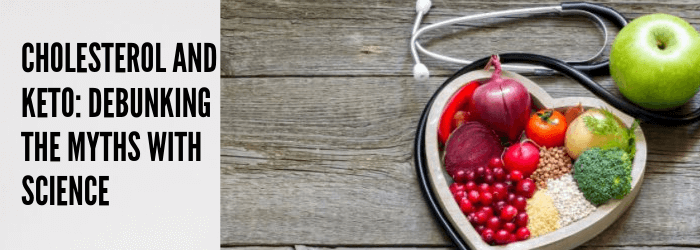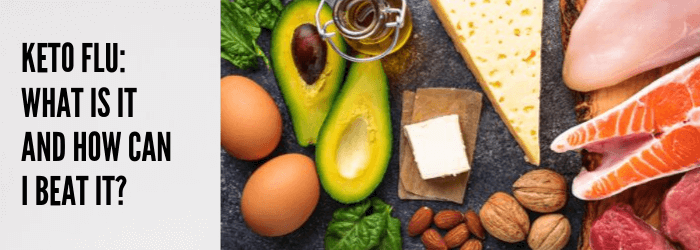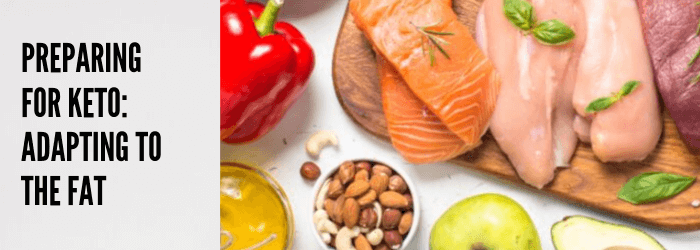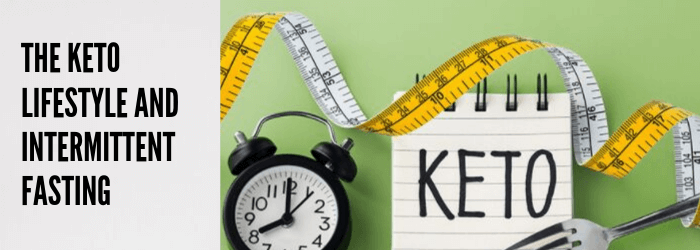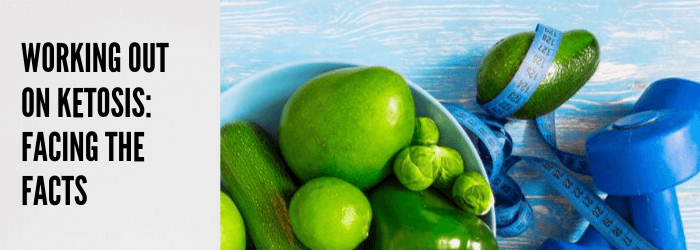So, What Is The Keto Diet?
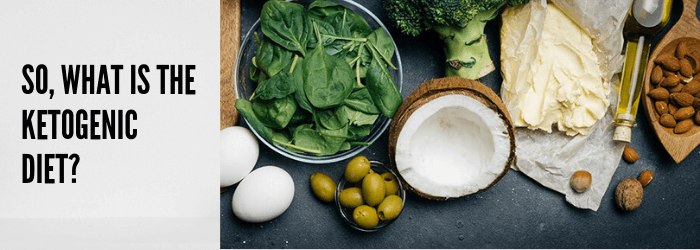
Living a ketogenic lifestyle means greatly reducing or completely cutting carbohydrates from your diet and replacing the bulk of your nutrient intake with fat. Your body adapts to the lack of carbs in your system and begins using stored and dietary fat for fuel.
How Does The Keto Diet Work?
The human body ordinarily runs on glucose, a simple sugar that comes from carbohydrates like bread, potatoes, crackers and other starches. Glucose travels through your bloodstream and is oxidized by the cells for energy.
If you’ve eaten more carbohydrates than your body needs to function, the extra glucose is stored as glycogen in the liver and muscles, or worse, as body fat. This is why eating a high-sugar diet can so easily lead to weight gain and eventually obesity.
On the keto diet, things work quite differently.
The golden rule of keto is to deprive your body of carbohydrates, cutting out grains, starchy vegetables, and sugars like fructose (found in fruit) and lactose (found in milk).
By doing this, you cut off the body’s supply of glucose, forcing it to burn up glycogen stores in your liver and muscles.
But what happens when all your glycogen stores have been used up?
Well, that’s where the keto-magic begins.
The human body comes prepared with a metabolic “fail-safe” to prevent starvation – a way to get energy into the cells without any dietary or stored sugars to work with.
That fail-safe is known as ketosis. Once all the body’s glycogen stores are depleted, the body’s stored fat becomes mobilized in the bloodstream and is turned into ketone bodies in the liver.
These ketones are then used by the cells’ mitochondria, the powerhouse of the cell, to fuel the body instead of glucose.
What Are Ketones?
Ketones are water-soluble molecules that can be used by cells for energy, very efficiently, I might add. Endogenous ketones (“endo” meaning “inside”), are the ketone bodies that your liver produces inside your body during ketosis.
Exogenous ketones (“exo” meaning “outside”) are simply bio-identical ketones made somewhere outside the body, usually in a laboratory, to be used in research, medicine, supplements and more.
What’s The Difference Between Ketosis and Starvation-Mode?
Starvation-mode and keto, although based on the same fundamental metabolic process, are in no way the same.
The main difference between the ketogenic diet and actual starvation is that, when you are starving, your body only has one place to get fat from: your body fat. Once you’ve used up all the excess body fat you have, the body has to resort to breaking down muscle for energy.
This leads to a loss of muscle mass, diminished brain function, and physical exhaustion.
Quite the opposite happens when you are eating a ketogenic diet. Because you have replaced carbohydrates with fats as your main source of macronutrients, your liver can make ketones out of the fat you eat.
Instead of feeling lethargic, the abundance of ketones in your bloodstream means your cells have plenty of energy to work with. This is why people often rave about how energized and even euphoric they feel after settling into ketosis.

Losing Weight on the Keto Diet
A Little History:
Eating a low-carb, high-fat diet was first popularized as an effective weight loss plan as early as the 19th century. A (formerly) obese English mortician named William Banting published an open letter to the British public in 1863, documenting his struggle to lose weight while following different diets.
The open letter explained that he had finally found success in losing weight by ditching sugar, milk and starchy foods. His ideas became wildly popular and have been used to inform many low-carb diets we still use today.
South African scientist and author of The Real Meal Revolution, Professor Tim Noakes, has gone so far as to name his own high-fat low-carb diet “The Banting Diet”, after the man himself.
Why Does The Keto Diet Cause Weight Loss?
Keto makes you lose weight for 3 reasons.
1. Water Weight Flushing
Have you ever noticed that you feel bloated after eating a high-carbohydrate meal?
The body actually retains water on a high-carb diet because every 1g of carbohydrates can hold nearly 4g of water.
When you start your keto diet, the body first burns through all your stored glycogen for energy and gets rid of the excess water in the process.
That’s why you lose weight so rapidly and impressively in the first few days of your keto journey.
2. Bodyfat Oxidation
Fat is stored in your body as adipose tissue, the soft, jiggly flab that’s hiding your six-pack.
When you are fat-adapted, or rather when your body is used to using fat for fuel, it uses the lipocytes (fat-storage cells) within your flabby adipose tissue to make energy.
Basically, you are taking energy out of cells you don’t want and putting it into cells you need to live, heal and grow.
3. Fighting Off Hunger
Once you start your keto diet, you will soon be amazed at how your relationship with food begins to change.
It is well-documented that eating a high-fat, low-carb diet has satiating effects. That is to say, you feel fuller for longer and you feel overall less hungry when eating the keto way. There are several reasons for this:
- Carbohydrates are high on the glycemic index and cause a blood-sugar spike when eaten. The energy is burned through very fast, and soon your blood-sugar plummets, leading to intense cravings. When you cut out carbs and replace them with slow-digested fats, you bypass the blood-sugar spike, kicking cravings to the curb once and for all.
- Most diets prescribe calorie restriction to lose weight. When weight loss happens, we generally see an increase in the hunger hormone, ghrelin, as a reaction to the decreased caloric intake. Studies have suggested that following the keto diet suppresses this surge in ghrelin, lowering hunger levels as a result.
- When you eat keto-friendly foods, you’ll likely be getting more fibrous veggies and high-quality proteins in your diet than you did when you ate mostly starch. Fibrous veggies not only help slow the digestive process (making you feel fuller for longer) but also create a good climate for gut bacteria. Protein, on the other hand, increases your levels of satiating hormones while lowering ghrelin.
The ketogenic lifestyle can legitimately change your life if you are open to it. All it takes is patience, commitment and a belief in yourself that you can do it.
Because, really, you can!
When you combine the hunger-busting qualities of the keto diet with its flair for fat burning, you have an iron-clad weight-loss solution on your hands.
With a solid support system and a trustworthy source of keto knowledge like what you have in KetoXpert, success is just over the horizon.
References:
Gibson AA, Seimon RV, Lee CM, Ayre J, Franklin J, Markovic TP, Caterson ID, Sainsbury A.Obes Rev. Do ketogenic diets really suppress appetite? A systematic review and meta-analysis. 2015 Jan; 16(1):64-76. https://www.ncbi.nlm.nih.gov/pubmed/25402637
Johnstone AM, Horgan GW, Murison SD, Bremner DM, Lobley GE.Am J Clin Nutr. Effects of a high-protein ketogenic diet on hunger, appetite, and weight loss in obese men feeding ad libitum. 2008 Jan; 87(1):44-55. https://www.ncbi.nlm.nih.gov/pubmed/18175736
Chisholm, Hugh, ed. (1911). Corpulence. Encyclopædia Britannica. 7 (11th ed.). Cambridge University Press. pp. 192–193. https://archive.org/stream/EncyclopaediaBritannica...
Jensen J, Rustad PI, Kolnes AJ, Lai Y. (2011). The Role of Skeletal Muscle Glycogen Breakdown for Regulation of Sensitivity by Exercise. Frontiers in Physiology. https://www.ncbi.nlm.nih.gov/pmc/articles/PMC32486...
Copyright text 2020 by KetoXpert.com Important Disclaimer: The information contained on KetoXpert.com is intended for informational and educational purposes only. KetoXpert.com is a participant in the Amazon Services LLC Associates Program, an affiliate advertising program designed to provide a means for sites to earn advertising fees by advertising and linking to KetoXpert.com.

